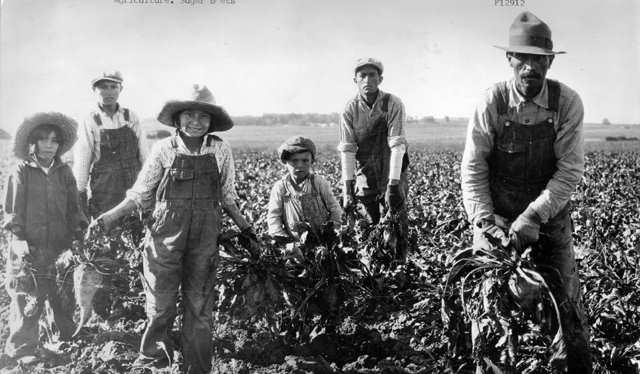As we press forward into the new year, we will likely hear more about the border between Mexico and the United States.
In recent news, a Massachusetts sheriff offered inmate labor to help complete the wall between the two countries. Imaginably, these stories will pop up more and more as we go.
The border between us was not always so clear. In fact, for more of our shared history, it existed as a zone. Even today, many people see the border only as an obstacle to overcome, not the final word. Perhaps they are right.
The border as we know it was never so clear as it is today, despite the holes. It took hundreds of years and a little bloodshed to define it, but it only took less about half a century and some sweat to make it what it is today, nearly 600 miles of fencing and wall.
We aren’t done writing this story, which begs the question, how will it end?
Establishing The Border

(source: wartime.podbean.com)
Before the border we know today, Mexico was twice the size of the place you know today. Established in the mid-1500s, that place was New Spain, not Mexico. It wasn;t yet sovereign.
Loosely managed, the Mexican territory extended up almost to Canada. It swept down through Idaho and covered modern day Texas. It wasn’t until the United States moved west that these borders started to matter.
When Texas separated from Mexico in 1836, then joined the United States in 1845, the pot began to boil. Texas was the battle ground, stoked by years of conflict, then the Mexican-American War. That lasted from 1846 to 1848.
Peace came in the form a treaty, The Treaty of Hidalgo, which took modern day California, Arizona, New Mexico, Texas and everything north up to Canada’s border. There was no wall yet, but we finally had a border.
The Great Depression & WWII

(source: emaze.com)
Prior to the 1940s not much stood between the two countries. There were a few bodies of water, but no walls or Homeland Security to stop people from crossing.
The people of Mexico were not only willing to come do the work others would not, they would do it for less. It seems little has changed.
Not so differently than today, opinions varied on Mexican immigration. Some felt the cheap labor threatened the already tight market. Others thought the cheap labor was a good solution. Woodrow Wilson opined, “the Mexican laborers are the solution to our common labor problem in this country.”
The First “Wall”

(Organ Pipes National Park | en.wikipedia.org)
It wasn’t a matter of national security, so much as nature preservation that spurred the first border. We established the Organ Pipe National Park (ORPI) in ’37, bordered by Mexico on one side.
The National Park Service managed it, staffed it with rangers like any park. Those rangers noticed that animals could cross the border with ease, potentially spending disease in their wake. The biggest concern was the risk to our livestock.
At first, they erected cattle fencing, but that didn’t stop all the little animals. It did, however, stop the big ones; force them to go around. Officials reported was how effective a fence could be for controlling different forms of movement over the border.
In later years, border security debates would cite this precedent for controlling human crossing as well.
1960’s Drug War

(source: steponerehab.com)
Richard Nixon’s Drug War, begun in the ‘60s, put a spotlight on the Mexico border as a source of drugs into the country. As the United States criminalized marijuana, Mexico intensified as a glaring concern.
In 1969, Nixon launched Operation Intercept, a sort of early stop and frisk move. Under Operation Intercept, any border crossing could warrant a search. To facilitate this, we added thousands of agents to our borders.
The ORPI fence may have been the first official wall, but the actions of Operation Intercept strained relations with Mexico like nothing else since the Mexican-American War. Mexico saw it as a betrayal of the implied trust between our two nations.
Growth After the ’60s

(source: pulitzercenter.org)
The years that followed Operation Intercept saw walls erected in key places along the border. We put up a barrier at any inhabited area or where any major roadway crossed the border.
As cities grew, we’ve added fence, border patrol and means to control crossing the border. By 2009, we’d fenced or walled over 580 miles of it, which is about where it is today. That leaves about 1,400 miles of the border yet open.
All of the walls couldn’t stop underground tunnels, drones, and catapults from shuttling drugs over the border. Nixon is still rolling in his grave over these details.
Secure Fence Act of 2006

(source: usatoday.com)
In 2005, Republicans proposed a plan to construct a fence along the remaining border, with a 100-meter buffer zone on the US side.
By 2006, Congress passed the Secure Fence Act, which outlined 700-miles of border construction. G.W. Bush signed the act in October that year.
Against the wishes of the Mexican government, the United States erected fence from San Diego to Yuma, Arizona, with sections extending to Texas.
In March of 2010, we halted construction due to costs exceeding the budget.
What will happen in the coming years for the border is the story we have yet to tell. The campaign for incoming president Trump promised completion of the wall, paid for by the Mexican government.
We have to assume it will happen in some version. What is perhaps more interesting to wonder is how long it will stand? Other than the Great Wall of China, most walls fall. Ask Berlin. Nothing lasts forever, not even divisions.

